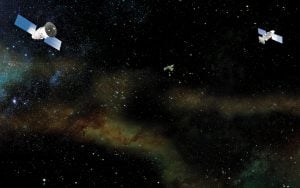
Travel
Exploring Newfoundland with Adventure Canada
Immerse yourself in Viking archaeology and Basque whaling history while taking in Newfoundland’s scenic coastline and incredible geology
- 1201 words
- 5 minutes
Science & Tech
The science behind the new Apple Watch Ultra, created for explorers

Earlier this month, Apple launched the Apple Watch Ultra, entering a market dominated by legendary watches designed for extreme environments — think outer space, the depths of the ocean and the summit of Everest.
However, Apple Watches have always been wrist-worn multipurpose devices as much as they are watches. They trace their lineage not back to those analog master timepieces but to the Pulsar, or Seiko’s 1983 watch, the Data 2000 — a device that could store up to 2,000 characters of data. At the time, the world was not prepared for computers to be worn on our wrists. Yet, a quarter century later, consumer fitness trackers hit the market, and by 2015, the Apple Watch raised the bar for wearable tech.
Several features separate Apple Watches from the rest. It’s not just the rugged appearance, the insane battery life or expanded 49mm display; the device boasts features created in consultation with explorers, athletes and adventurers. Jeff Williams, chief operating officer for Apple, said at the device’s unveiling, “Inspired by their stories, we set out to create an Apple Watch designed specifically for exploration, adventure and endurance, and it’s extraordinary.”
The Ultra certainly packs a technical punch. While on the wrist, it leverages human body heat to offer a broad operating temperature range — from –20 to 55 degrees Celsius. This is a highly regarded development amongst those who remember pulling the battery from a mobile phone to warm it enough for use while skiing a mountain.
RCGS Explorer-in-Residence Ray Zahab, who we reached in Pangnirtung, Nunavut, was one of the explorers consulted in the design of the new watch. He said he is most excited about the durability and accuracy of the Apple Watch Ultra.
The MIL-STD 810-certified watch boasts new safety features that leverage tech to deliver a revolutionary user experience. We broke down the science behind some of these features to better explain why this smartwatch is so groundbreaking.

With its upgraded precision dual-frequency GPS, Apple Watch Ultra boasts the most accurate GPS available in a smartwatch. Apple accomplished this by leveraging two positioning frequencies simultaneously and pairing the signals with their custom positioning algorithms. In simpler terms, standard GPS-enabled devices tend to operate using the L1 frequency, the oldest and most established signal available to the public. However, L1 has a relatively slow frequency, which can introduce problems when obstacles like buildings or dense trees get in the way. The new L5 frequency is the most advanced GNSS (Global Navigation Satellite System) and operates at a much faster frequency. When paired with L1 and Apple’s algorithms, it allows the device to report more accurately on a precise location.
Along with the improvements to GPS, Apple Watch Ultra comes with an upgraded Compass app with new features for hikers and adventures. By pressing the new Action button — a third button added to the side of the watch for easy access to programmable functions — wearers can save a GPS waypoint to find their way back to the trailhead or mark their tent when exploring the backcountry. While in the Compass app, a footprint icon activates a new Backtrack feature that helps to retrace your steps when lost. The feature drops waypoints along your route to chart a course history. It automatically activates when you go off the grid for extra peace of mind when exploring.

Fall Detection has been a life-saving feature available on Apple Watch for years — detecting falls for cyclists, trail runners and everyday users — but the new Crash Detection has propagated across all new Apple Watch and iPhone models. Made possible by an improved accelerometer that can measure up to 256 g-forces, next-generation Apple devices can now detect when a severe motor vehicle crash has occurred. The watch will even check in on you and contact emergency services. In addition, Apple Watch Ultra takes safety one step further. Explorer-in-Residence George Kourounis is thrilled that the Ultra is rugged enough to “take into the extreme environments” he specializes in. But what Kourounis loves most are “the intrinsic safety and rescue features,” like the new Siren app — which emits a piercing 86-decibel that can signal your position from up to 180 metres away.
The first smartwatch to integrate a dive computer, Ultra is certified to WR100 (water resistance of 100 metres) and allows for recreational diving up to 40 metres (the device is certified to EN13319, an international standard for dive computers and gauges). In addition, Apple added a built-in depth gauge and water temperature sensor to offer accurate real-time readings through a new Depth app. Apple even went so far as to partner with Huish Outdoors, a leader in underwater exploration, to develop the Oceanic+ app exclusively for Apple Watch Ultra, which will launch this November. Explorer-in-Residence and renowned underwater explorer Jill Heinerth, who just returned from a diving expedition in Newfoundland, is looking forward to exploring the opportunities for seamless integration with her activities. “Apple Watch Ultra will provide me with critical health metrics integrated with my adventurous journeys above, below and inside the Earth,” she says.
Are you passionate about Canadian geography?
You can support Canadian Geographic in 3 ways:

Travel
Immerse yourself in Viking archaeology and Basque whaling history while taking in Newfoundland’s scenic coastline and incredible geology

Environment
Ghost gear — lost or abandoned fishing gear — is a major problem in our oceans, but renewed efforts are underway to clean it up

Science & Tech
As geotracking technology on our smartphones becomes ever more sophisticated, we’re just beginning to grasps its capabilities (and possible pitfalls)

Exploration
An excerpt from The Boundless Life: 13 Lessons Learned the Hard Way